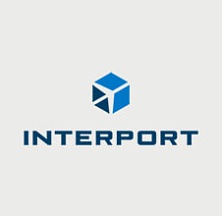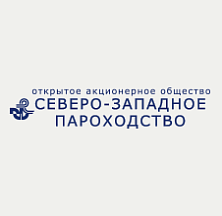
"We get ahead where we can. We should all be moving ahead wherever life offers an opportunity to do so. Sitting idly saying that all is not as it should be, that, to me, is what losers do".
Vladimir Potanin,
Forbes, 2012

In order to consolidate and manage its transportation and logistics assets and build new cargo infrastructure for airports, in 2012 Interros created a new managing company, Interport. The company has invested over 750 million roubles in the development of the Yemelyanovo airport cargo facility in Krasnoyarsk and over 600 million roubles in the Sheremetievo airport cargo facility. The AirBridge Company has started its Cargo Hub operations and regular
Interport Managing Company:
1. Provides full servicing of cargo flights (supervision); carries out
2. Applies Western processes used at the world’s major airports, e.g. hubs.
3. Manages the Yemelyanovo terminal, with warehouse and office space totaling 11,000 m², and which meets all modern safety, storage conditions and service quality requirements.
History
2010
Together with Rosaviation and the Russian Federal Customs Service, Interros begins construction of a
The first stage of this
2011
In October, Interros begins implementing its investment project aimed at developing the cargo handling facility at the Yemelyanovo airport in Krasnoyarsk. Yemelyanovo airport becomes Interros’s second airfreight investment project, run jointly with Rosaviation, the Federal Customs Service of the Russian Federation, the Krasnoyarsk region administration and AirBridge Cargo LLC. The multilateral agreement is signed in Moscow on October 3rd.
2012
In February 2012 Interros establishes the Interport managing company in order to consolidate and manage its transportation and logistics assets and build new cargo infrastructure for airports. For every airport it is involved in, the new company aims to provide equally high level of service to all air carriers and implement modern cargo processing technologies, including the
In 2012 Interport invests in equipment and custom vehicles at Sheremetyevo, reconstructs the existing warehouses, launches the first specialized terminal for servicing transfer cargo in Russia, and designs a large new terminal. Additionally, foundations are laid for the merger of the production and technological processes of Interport’s cargo operators.
In March Interport celebrates its first anniversary as operator at the Yemelyanovo airport. By then, the airport’s overall cargo turnover has increased 40% and its international freight traffic has tripled. In June the company expands its storage facilities for processing cargo requiring
By this point a total of 750 million roubles has been invested in the Yemelyanovo airport cargo facility development project in Krasnoyarsk, and 600 million roubles in the Sheremetyevo airport cargo facility.
2013
The freight traffic continues to rise over the course of Interport’s second year of operations at Yemelyanovo: up 5% on domestic flights and up almost 30% on international routes.
The cargo terminal at Yemelyanovo is hailed as the best cargo facility in Russia and the CIS at the 3rd Airport Development Forum held in May.
In June Interros and its partners sell their shares in the Sheremetyevo airport cargo facility to TPS AVIA Holding. The first stage of the Yemelyanovo cargo facility’s partial reconstruction is concluded at the end of October. The 300 m2 facilities have been modernized in order to improve transfer cargo processing during hub operations, which will make it possible to increase the terminal’s hub cargo turnover by between 65,000 and 80,000 tons per year.
2014
In January a regional warehouse is set up on the grounds of Interport’s cargo facility for storing goods for the Duty Free that opened at Yemelyanovo airport. In addition to warehouse storage, the goods are also loaded and unloaded, inspected and transported from the regional warehouse to the Duty Free shop.
At the end of March Interport marks 3 years since the beginning of its activities. It has handled almost 57,000 tons of various goods and mail over this period.
2015
Interport implements a new management system at the Yemelyanovo cargo terminal In April.
In July the Interros group exits the joint venture. The Kratos Group becomes the sole owner of Interport.

Join Stock North-Western Shipping Company (NWSC)
- The largest water shipping company in Russia
- Main business lines: sea-river cargo shipping, shipbuilding, ship refurbishing, passenger transport
- NWSC operations area: domestic waterways of the European portion of the Russian Federation, and the Baltic, North, Mediterranean, Black, and Caspian Seas.
- Fleet: the company operates 145 cargo transport vessels with an aggregate cargo capacity of 550,000 tons, including 121 sea-river ships, 4 barges, 12 tug boats and 8 auxiliary vessels.